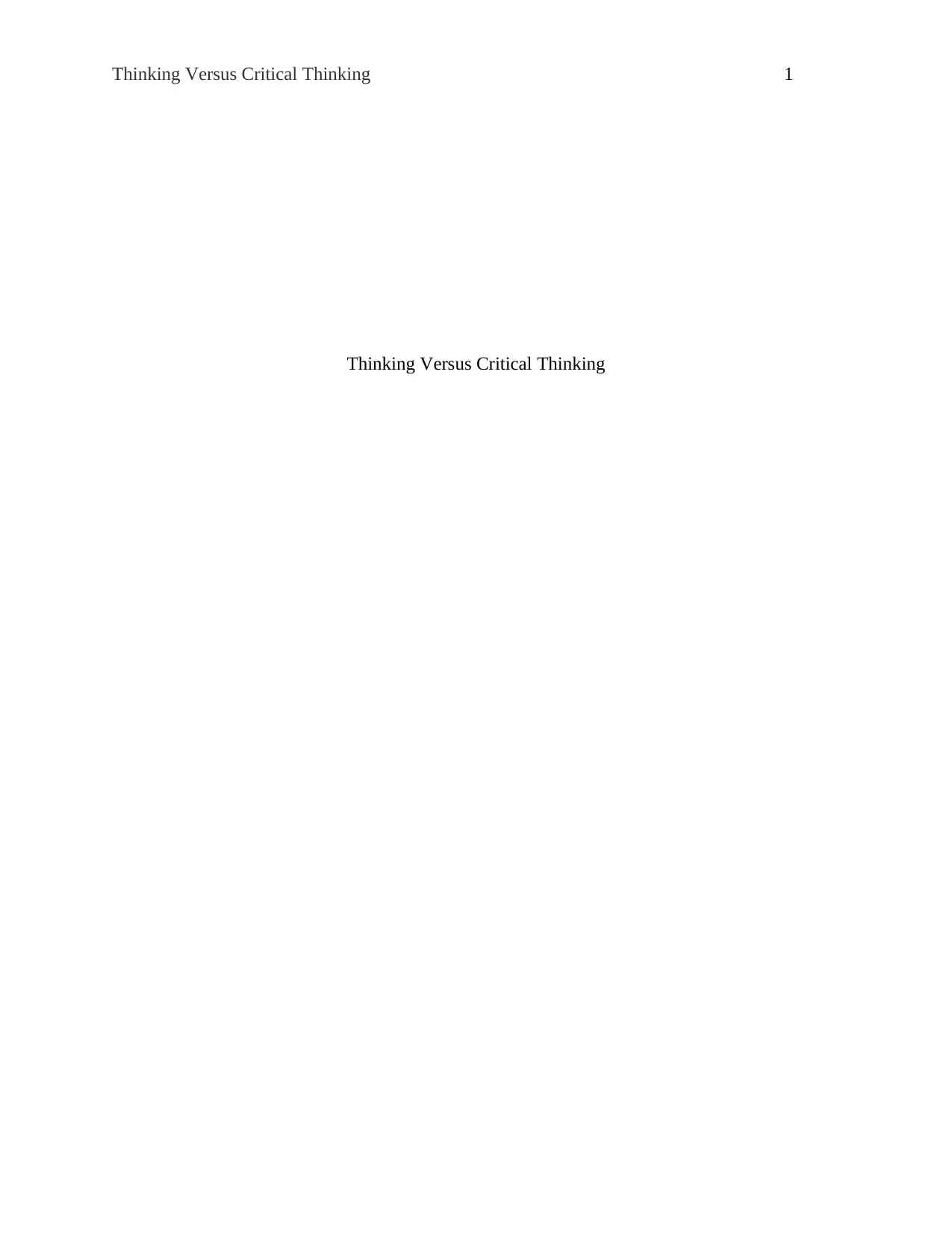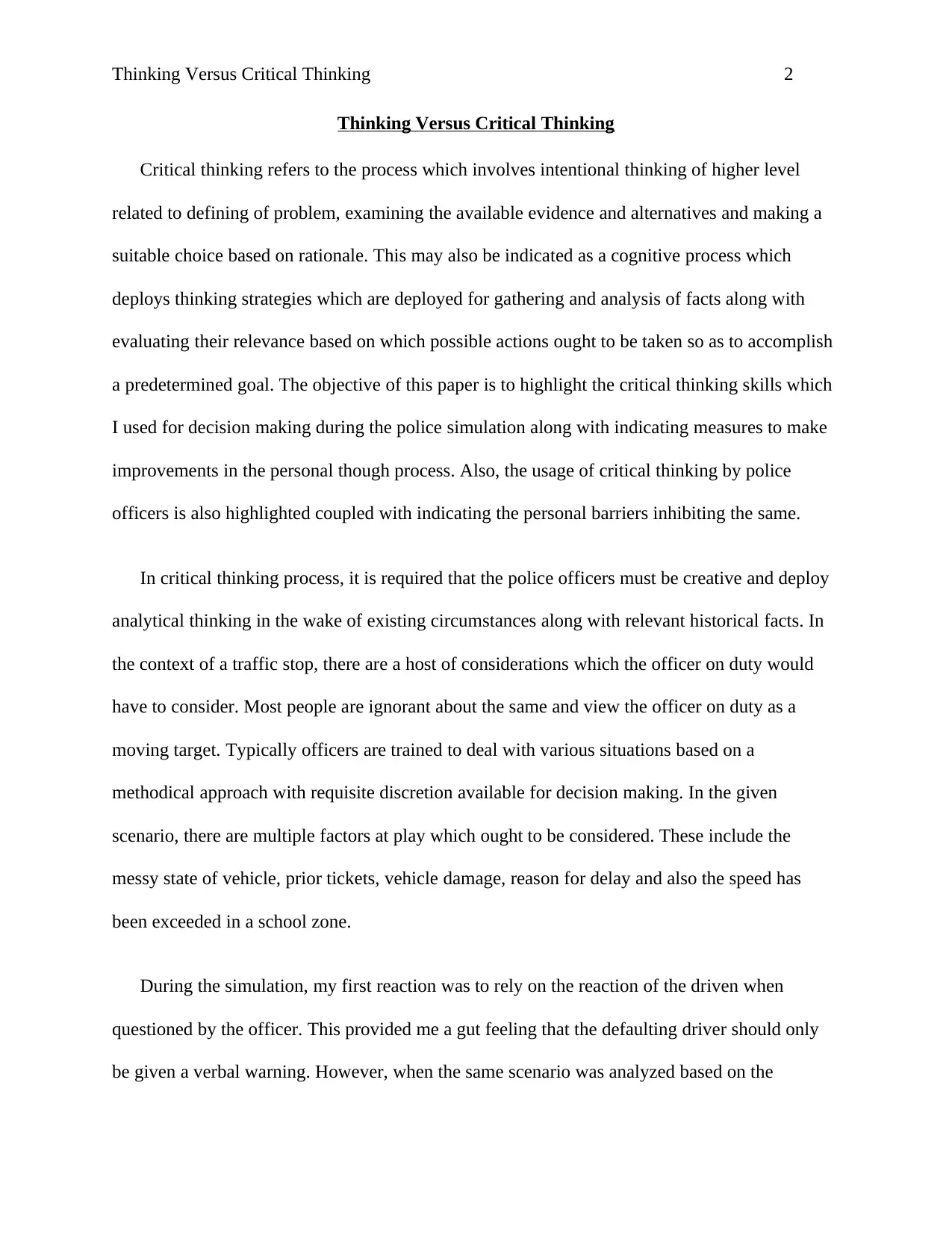Analysis of Critical Thinking Skills in Police Work: ABC/123 Report
VerifiedAdded on 2022/10/17
|4
|811
|12
Report
AI Summary
This report examines the application of critical thinking skills within the context of a police simulation, focusing on decision-making processes. The report begins by defining critical thinking and contrasting it with general thinking, then describes the critical thinking skills used during a police simulation, highlighting the factors considered, such as the driver's behavior and the context of the situation. The analysis includes an assessment of how the student's initial reactions were modified through critical evaluation of the available evidence. Furthermore, the report explores the role of critical thinking in law enforcement, emphasizing the importance of analyzing information, active listening, and ethical considerations. It also identifies personal and professional barriers that can impede critical thinking, such as bias, conflicts of interest, and lack of training. Finally, the report suggests strategies for improving personal thought processes and encourages officers to adopt creative solutions based on the needs of the community.
1 out of 4






![[object Object]](/_next/static/media/star-bottom.7253800d.svg)